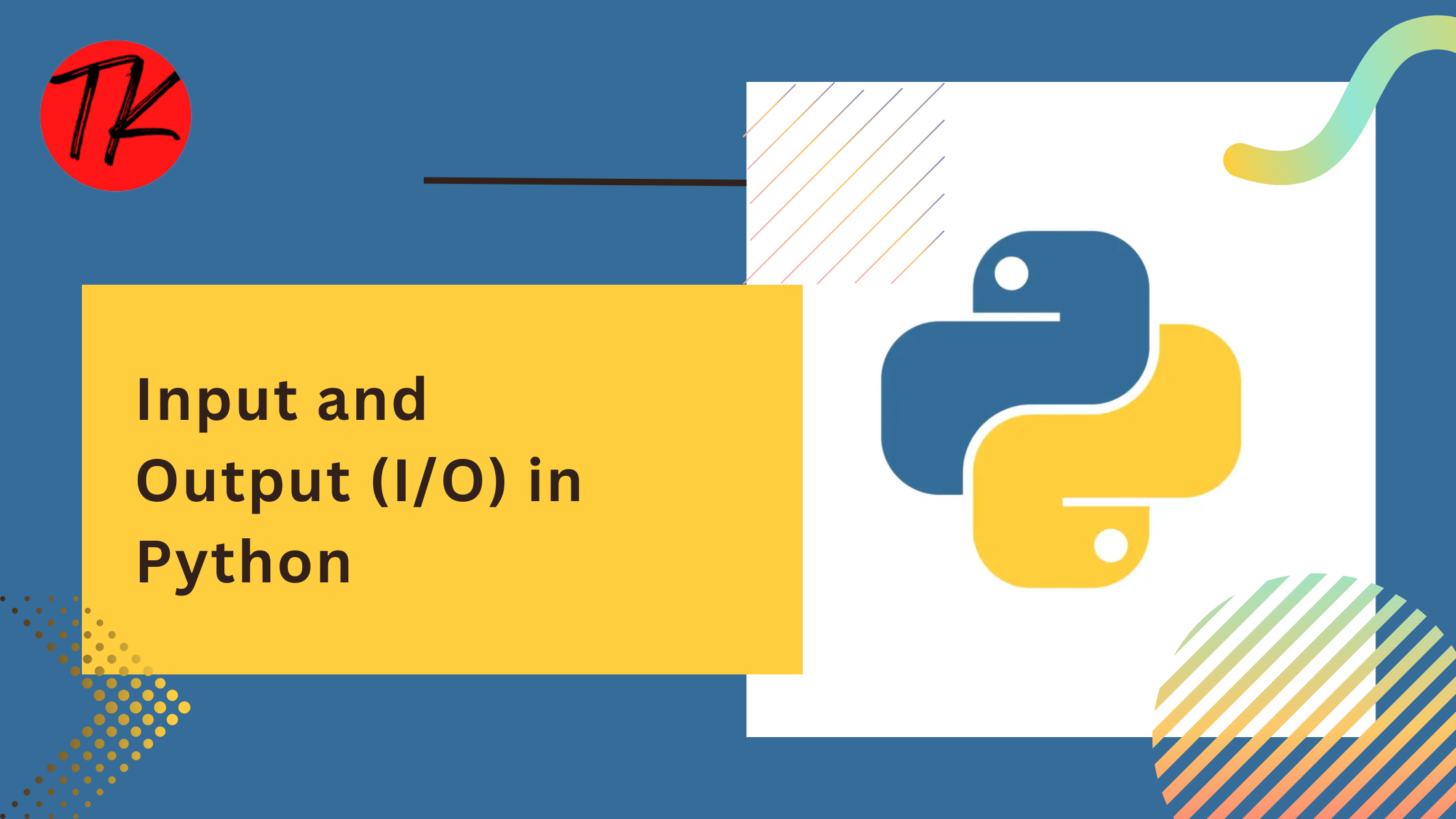Introduction
When working with Input and Output (I/O) in Python, handling user input, printing formatted output, and reading/writing files are essential skills. Python provides powerful I/O capabilities that make data interaction seamless.
In this guide, we’ll explore everything about Input and Output (I/O) in Python, including user input, console output, file handling, and best practices.
Table of Contents

1. What is Input and Output (I/O) in Python?
Input and Output (I/O) in Python refers to the mechanisms for accepting data from users (input) and displaying or saving data (output).
- Input: Receiving data from users using the
input()function or reading from files. - Output: Displaying results using
print()or writing to files.
2. Taking Input in Python
2.1 Using input() Function
The input() function captures user input as a string.
name = input("Enter your name: ")
print("Hello,", name)
2.2 Handling Numeric Input
Convert user input to integer or float:
age = int(input("Enter your age: "))
print(f"You are {age} years old.")
2.3 Command-Line Arguments
Use the sys module to receive input from the command line.
import sys
print("Arguments passed:", sys.argv)
3. Printing Output in Python
3.1 Using print() Function
print("Hello, World!")
3.2 Formatting Output with sep and end
print("Python", "I/O", "Tutorial", sep=" - ")
print("End of", end=" Output Section.\n")
3.3 Using f-strings for Better Formatting
name = "Alice"
age = 25
print(f"My name is {name} and I am {age} years old.")
4. File Handling in Python – Reading and Writing Files
4.1 Opening a File
file = open("example.txt", "r")
content = file.read()
print(content)
file.close()
4.2 Writing to a File
with open("output.txt", "w") as file:
file.write("Python file handling made easy!")4.3 Reading a File Line by Line
with open("example.txt", "r") as file:
for line in file:
print(line.strip())
4.4 Appending to a File
with open("output.txt", "a") as file:
file.write("\nAppending a new line.")
Learn: How to Get Project Management Skills: A Comprehensive Guide
5. Working with Different File Formats in Python
5.1 Handling CSV Files
import csv
with open("data.csv", "w", newline="") as file:
writer = csv.writer(file)
writer.writerow(["Name", "Age"])
writer.writerow(["Alice", 25])
5.2 Handling JSON Files
import json
data = {"name": "Alice", "age": 25}
with open("data.json", "w") as file:
json.dump(data, file)
with open("data.json", "r") as file:
loaded_data = json.load(file)
print(loaded_data)
6. Advanced I/O Operations in Python
6.1 Redirecting Output to a File
import sys
sys.stdout = open("log.txt", "w")
print("This will be written to the file.")
sys.stdout.close()
6.2 Handling Binary Files
with open("image.jpg", "rb") as file:
data = file.read()
print("Bytes read:", len(data))
7. Exception Handling in Python I/O Operations
try:
with open("non_existent.txt", "r") as file:
content = file.read()
except FileNotFoundError:
print("File not found!")
8. Real-World Applications of Input and Output (I/O) in Python
8.1 Logging System
import logging
logging.basicConfig(filename="app.log", level=logging.INFO)
logging.info("This is an info message")
8.2 Web Scraping and Saving Data
import requests
response = requests.get("https://example.com")
with open("page.html", "w") as file:
file.write(response.text)
Conclusion
Mastering Input and Output (I/O) in Python is crucial for any programmer. This guide covered:

input() and command-line arguments.
print() with formatting techniques.


By applying these concepts, you’ll enhance your Python skills and build efficient applications.
Learn More:
Comments in Python: A Complete Guide










